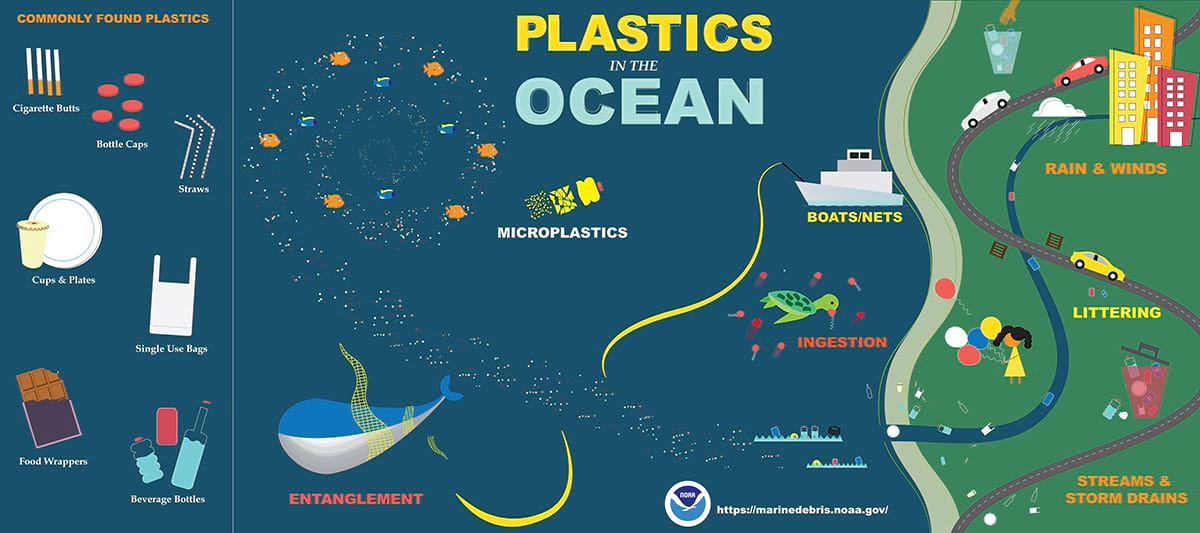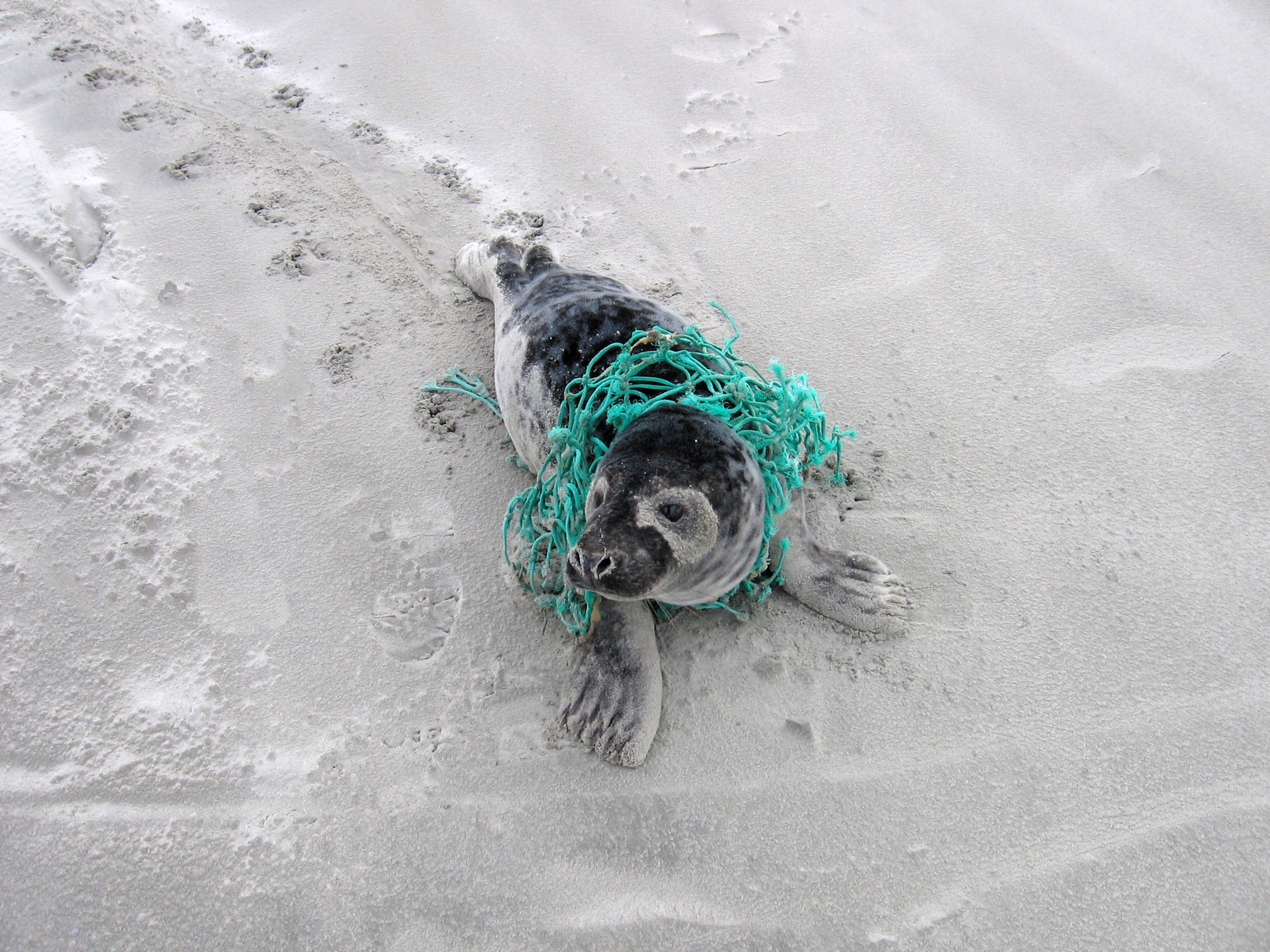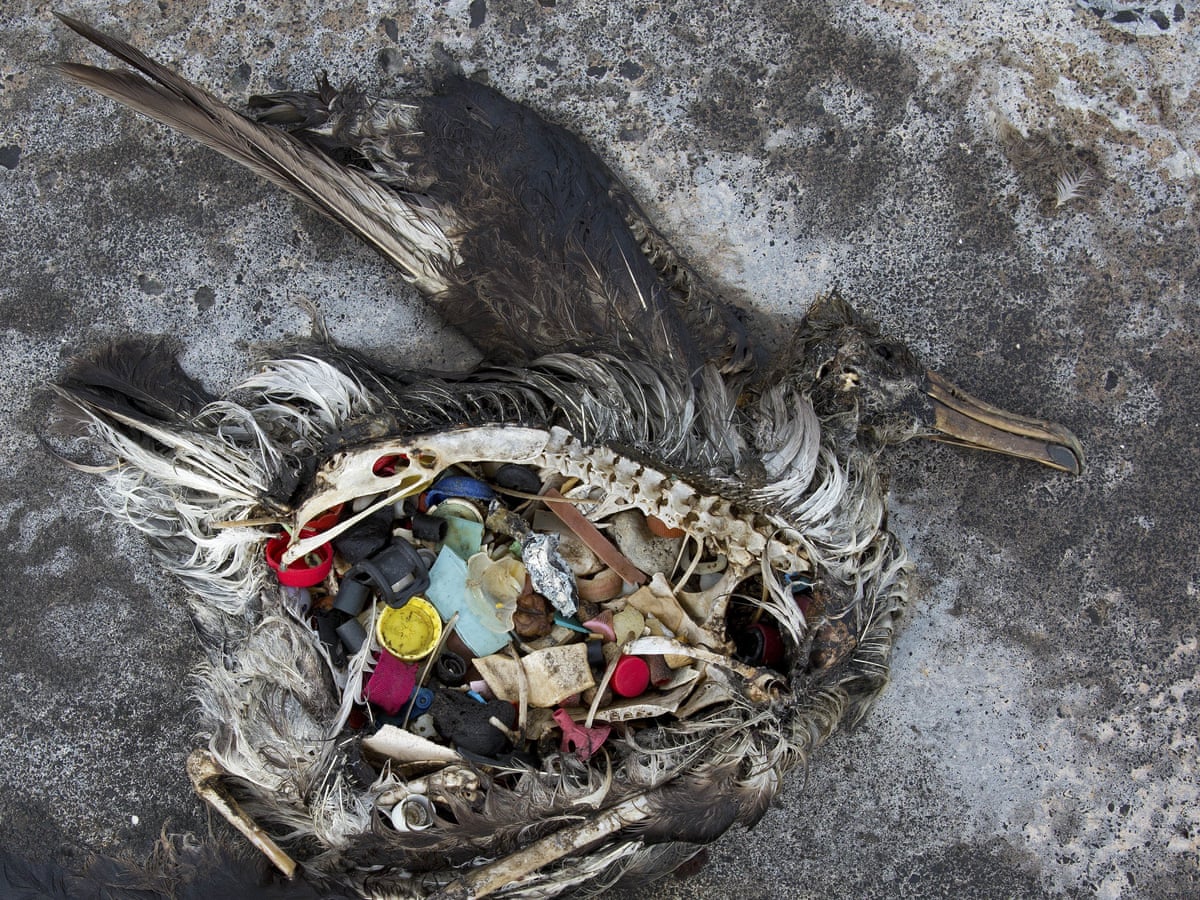Portugese version
O oceano é o lar de uma grande variedade de vida. Do minúsculo krill à enorme baleia azul, todos eles dependem de um ambiente de vida saudável para prosperar. Infelizmente, o oceano é agora também o lar de enormes quantidades de detritos plásticos provenientes de terra e de barcos. Estes detritos marinhos podem afetar a saúde do ecossistema oceânico e ameaçar o bem-estar dos organismos marinhos e, em última análise, também a saúde humana.
O plástico é um material muito prático, durável e barato e pode ser usado para diversos fins. Isso fez com que hoje seja um material amplamente utilizado e onde podemos encontrar nos produtos mais malucos, inclusive roupas e às vezes até pasta de dentes. O benefício da durabilidade dos materiais também é o culpado, pois não se degenera naturalmente como muitos outros materiais orgânicos ao longo do tempo. Portanto, se o plástico acabar no meio ambiente, provavelmente permanecerá lá por muito tempo, com grandes consequências para a vida selvagem e para a saúde ambiental.
 |
| Fontes de plástico no oceano (Fonte: National Ocean Service) |
Produtos plásticos maiores, como sacos plásticos, redes de pesca, garrafas, insufláveis, etc., ficam na superfície e animais marinhos como tartarugas, golfinhos ou baleias podem ficar presos neles, o que pode feri-los ou estrangulá-los. Existe até um termo para a morte por enredamento em redes e cordas de pesca descartadas, “ghost fishing”. Além disso, os animais podem confundir o plástico com comida. Sacolas plásticas podem ser confundidas com algumas belas águas-vivas, por exemplo. Os animais comem-no e ele enche o estômago com material indigerível. Consequentemente, o plástico pode danificar os órgãos intestinais e os animais podem perder o apetite e morrer de fome.
 |
| Ghost Fishing (Source: HillNotes) |
Para as aves marinhas, o plástico também é problemático. Eles podem ficar presos em material plástico quando estão na água e podem ingerir plástico que permanecerá em seu estômago. As aves marinhas são atraídas pelo cheiro do plástico. Depois de algum tempo flutuando no oceano, crescem algas nos (micro) plásticos e é libertado um composto químico que as aves, principalmente espécies de albatrozes e cagarras, conseguem cheirar e que normalmente utilizam para encontrar alimento. O mesmo fenômeno foi observado em peixes que procuram ativamente microplásticos por causa do cheiro. Quando as aves marinhas comem plástico, isso pode danificar os seus órgãos e causar desnutrição. Relacionado com isto, os investigadores descobriram uma nova doença em aves marinhas, a 'plasticosis', depois de encontrarem tantas aves marinhas com cicatrizes no seu sistema digestivo devido a todo o plástico que ingerem.
The ocean is home to a wide variety of life. From tiny krill to the enormous blue whale, they all depend on a healthy living environment to thrive. Unfortunately, the ocean is now also home to huge amounts of plastic debris coming from land and boats. This marine debris can impact the health of the ocean ecosystem and threaten the well-being of marine organisms and ultimately also human health.
Plastic is a very handy material, it is durable and cheap and can be used for many different purposes. This has made that it is now a widely used material and you can find plastic in the craziest products, including clothing and sometimes even toothpaste. The materials benefit of durability is also the culprit, as it is does not naturally degenerate like many other organic materials do over time. So if plastic ends up in the environment, it will likely stay there for a looooong time, with major consequences for wildlife and environmental health.
 |
| Sources of plastic in the ocean (Source: National Ocean Service) |
Bigger plastic products like plastic bags, fishing nets, bottles, inflatables etc. stay on the surface and marine animals like turtles, dolphins or whales can get trapped in these which can injure or strangle them. There even is a term for starvation from entanglement in discarded fishing nets and ropes, 'ghost fishing'. Also, animals can mistake the plastic for food. Plastic bags can get mistaken for some nice jellyfish for example. Animals eat it and it will fill their stomach with indigestible material. Consequently, the plastic can damage the intestinal organs and animals may loose their appetite and starve to death.
 |
| Ghost Fishing (Source: HillNotes) |
 |
| Grey seal trapped in a fishing net (coast of the Netherlands) (Source: Pieterburen Seal Rescue Center) |
For seabirds, plastic is also problematic. They can get trapped in plastic material when on the water and they can ingest plastic which will remain in their stomach. Seabirds get attracted by the plastic from the smell. After some time floating in the ocean, algae grow on the (micro) plastics and a chemical compound is released which the birds, mainly albatross and shearwater species, can smell and which they normally use to find food. The same phenomenon has been seen in fish that are actively foraging for micro plastics because of the smell. When seabirds eat plastic, it can damage their organs and lead to malnourishment. Related to this, researchers have discovered a new disease in seabirds, 'plasticosis', after finding so many seabirds with scarring in their digestive system from all the plastic they ingest.
 |
| This seabird likely died from plastic ingestion (Source: Guardian) |



Sem comentários:
Enviar um comentário